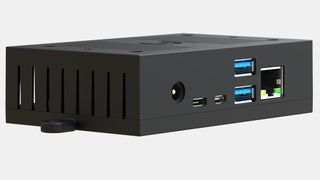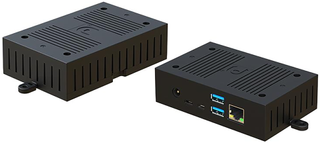Qualcomm Snapdragon-Powered Ally PC Lands at $149
Azulle's Ally is designed for simple workloads

This week Azulle introduced Ally, a Snapdragon-based mini PC running Google's Android (via FanlessTech). Raspberry Pi single-board computers (SBCs) have become quite popular among enthusiasts, so it is logical for other platform holders to look at that market segment. Qualcomm has been trying to enter the PC market for several years now, and while the company has been working closely with Microsoft on Windows-on-Snapdragon, it looks like it doesn't want to put all its eggs into one basket.
The Azulle Ally is based on the low-cost Qualcomm Snapdragon 450 system-on-chip with four Arm Cortex-A53 cores operating at 1.80GHz, Adreno 506 graphics, and a video encoding/decoding engine that supports Full-HD resolution as well as H.265, H264, VP8, VP9. The SoC is equipped with 2GB of DDR4 memory and 16GB of NAND flash storage. The unit has rather limited connectivity that includes a Wi-Fi 5 + Bluetooth 4.2 adapter, GbE port, two USB 3.0 Type-A ports, and two Micro HDMI outputs.
Azulle's Ally runs Google's Android 10 operating system, which is neither feature-rich nor flexible, as noted by FanlessTech. However, it can still work with many of Google's cloud services and can serve as a thin client, so it isn't completely powerless, especially if you consider pricing. Still, you shouldn't expect much from this product.

Azulle doesn't position Ally for demanding workloads, instead positioning the unit for digital signage, wayfinding machines, kiosks, and various process tracking applications. In addition, the system is completely fanless, so you can use it almost everywhere, except in industrial environments.
Azulle's Ally costs $149.99, which is well below the typical price of embedded PCs for commercial and enterprise applications.
Stay on the Cutting Edge
Join the experts who read Tom's Hardware for the inside track on enthusiast PC tech news — and have for over 25 years. We'll send breaking news and in-depth reviews of CPUs, GPUs, AI, maker hardware and more straight to your inbox.

Anton Shilov is a Freelance News Writer at Tom’s Hardware US. Over the past couple of decades, he has covered everything from CPUs and GPUs to supercomputers and from modern process technologies and latest fab tools to high-tech industry trends.
Most Popular



